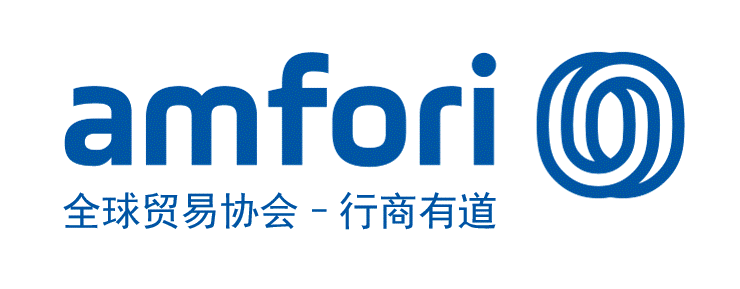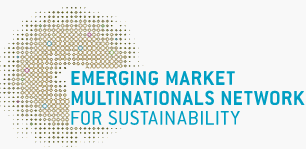The sustainable development story of the glittering BRI project
2022-03-15GoldenBeeGoldenBee0
Editor's note
During the 2021 "Golden Key -- SDG Solutions" Campaign, as a model for SDG solutions overseas, the China-Belarus Great Stone Industrial Park(Great Stone) won the 2021 GoldenKey·Excellence Award for its action "Build a sustainable overseas park to contribute to the green BRI" in the theme of "We Are the World".
Hailed as "a pearl on the Silk Road Economic Belt", Great Stone is an overseas economic and trade cooperation zone with the largest planned area, the largest scale of development and construction, and the highest level of cooperation among China's investment. It is also the largest industrial development zone in Europe. So far, there are 85 companies in the Park, 43 of which are Chinese companies, with a total investment of USD 1.2 billion.
As an important carrier of the Belt and Road development, China’s overseas economic and trade cooperation zones are playing an increasingly important role as a way to explore a new mode of investment cooperation along the Belt and Road. The sustainability of overseas parks is not only in line with the vision of the BRI to contribute to the sustainable development of partner countries, but also comfort to the general requirements of the Chinese government for cooperation zones and overseas Chinese-funded enterprises, which is a must for the development of overseas parks.
As a landmark project of the BRI, Great Stone is located on the outskirts of Minsk, the capital of Belarus. It is China's largest overseas economic and trade cooperation zone with the highest level of cooperation, initiated by the heads of China and Belarus. The Park is strongly supported and promoted by the governments of two countries, and the two Chinese central state-owned enterprises, China National Machinery Industry Corporation (Sinomach) and China Merchants Group (CMG), are leading the development and operation.
Since the construction began in March 2015, the Park has shifted from infrastructure construction to high-quality development with equal emphasis on development and operation. In recent years, the achievements of the Park have gained more and more recognition. In 2020, it was selected as the Demonstration Case of Global Service on China International Fair For Trade In Services (CIFTIS).
Taking Great Stone as an example, this article analyzes and summarizes the sustainable development of overseas industrial parks and explores the experience behind their success.
Strengthening top-level design to build high quality and standards parks
With a total planning area of 112.5 square kilometers, the Park has taken "international industrial park, ecological industrial city" as the development vision since its establishment and adhered to the sustainable development. The Park is an industrial investment platform for the world. It is committed to promoting sustainable industrialization of enterprises in China, Belarus and the world, promoting sustained economic growth, creating decent jobs and incomes, and helping reduce poverty, hunger and inequality.

The National Statistical Committee of Belarus recently released the key business indicators for tenants in the Park in the first half of 2021. According to the data, in the first half of 2021, there are 71 tenants, a year-on-year increase of 14.52%; the average number of registered employees was 1,725, a year-on-year increase of 113.75%; the industrial output value of tenants was 143.2 million Belarusian rubles, a year-on-year increase of 220.36%; commodities exports and imports amounted to USD 41.3 million and USD 48.8 million, a year-on-year increase of 24.77% and 17.59% respectively. In addition, the sales revenue and fixed asset investment of tenants have increased significantly.
At the same time, the Park improves the efficiency of resources and energy, and reduces GHG and other pollution emissions to pursue ecological development. It is committed to improving the health and well-being of employees, develops community friendship and engages in public welfare, thus winning extensive social benefits while creating good economic benefits.
Practice of constructing sustainable overseas cooperation zone
To contribute to the UN SDGs, the Great Stone mainly promotes sustainable development from the following aspects.
Ensure the sustainability of developers and tenants in terms of policies and management
The development of overseas parks cannot be separated from long-term stable investment environment, sound legal basis and strong institutional support from the host country, and the implementation of relevant policies and institutional arrangements at the level of cooperation zones.
In terms of management structure, the Park has set an example in establishing a multi-level management system: a three-level management structure, including the first level, the China-Belarus Intergovernmental Committee on Cooperation, established by the departments of the two governments (the Ministry of Commerce of China and the Ministry of Economy of Belarus), to promote park affairs as a whole; the second level, the Park Management Committee, responsible for the implementation of the park's policies and administrative approvals, providing one-stop services for the administrative affairs for tenants; the third level, the China-Belarus Industrial Park Development Co., Ltd., jointly established by Chinese and foreign shareholders, responsible for the land development, investment attraction and operation management of the Park.
The multi-level management structure of the Park has helped to establish fair and strong institutions, and the one-stop service of the intergovernmental coordination mechanism and the management committee has effectively simplified administrative procedures and reduced the room for corruption.
In terms of park policy, the Park has created a policy highland in the Eurasian region. Since 2012, the President of Belarus has issued four presidential decrees, establishing a series of preferential policies in the form of laws, involving land (99 years of the right to use and can be converted into private ownership), taxation (corporate income tax exempted for ten years, until 2062 halved), construction, customs, labor relations, border entry and exit (180 days in a calendar year visa-free and unlimited number of days per time), etc.
The preferential policies of the Park have created good conditions for attracting investment, so that the park can maintain long-term development vitality and create more economic growth and employment opportunities for the local people, so as to achieve the goal of sustainable development at the economic level.
Scientific planning, ecological protection and industry &city integration
From site selection to planning, the Great Stone adheres to the concept of sustainable development, pays attention to ecological protection and the integration of industry and city. Considering that the park construction is likely to cause a negative impact on the biodiversity of the site, the Park has retained two ecological reserves located inside , and its primary forest and natural waters have been completely preserved.
In addition, the overall plan also retains 15 villages in the Park, saving nearly 2,000 residents from demolition. During the construction of the Park, roads from the production area to the indigenous villages were also built, which has brought convenience to the local people. In addition to industrial logistics facilities, the Park is also planned the land for residence, scientific research, businesses, schools, hospitals, etc. While vigorously developing advanced manufacturing, the Park is also improving the functions of scientific research, medical care, education, tourism and vacation, in a bid to build an international new city integrating ecology, livability, industry, vitality and innovation.
The Park also determines the progressive development concept in the planning. The total planning area of the Park is more than 110 square kilometers and will be developed in four phases. Infrastructures will be built in progressively developed parks according to the actual needs to avoid waste of resources caused by unreasonable large-scale investment and development. At present, the construction of the first phase of the Park's 8.5 square kilometer infrastructure has been completed. The follow-up development will be promoted according to the overall development of the Park, and will not be blindly developed on a large scale, resulting in waste and idle resources.
An environmental-friendly park with a green background
1. Building high-standard park infrastructure. The planning scope of Great Stone includes natural water systems such as the Volma Valley, and the water supply source of the capital Minsk, so the Park has very strict management measures for water intake and drainage.
In the process of infrastructure construction, a set of water facilities such as water supply, sewage treatment, and rainwater collection are considered to ensure the rational use of water resources in the Park. Based on the concept of sponge city, a rainwater storage pond is set up. The rainwater treatment station degreases and filters the rainwater, with the effluent suspended solids less than 20mg/L, and the petroleum substances less than 0.3mg/L.

Sewage treatment plant in the Great Stone
The sewage treatment plant has a processing capacity of 60,000 cubic meters per day, and the effluent concentration meets the allowable concentration value of the fishery facilities in Belarus, which is the first set of stations in Belarus to meet this standard. The total nitrogen amount of the effluent is less than 5mg/L, reaching the highest requirement for the effluent of sewage treatment plants in China. Although the high standard has increased the cost and extended the construction period, it has injected a touch of green into the sustainable development of the Park.
2. Strictly implementing the admission standards to introduce qualified enterprises. At the initial stage of its development, the Park has clarified the leading industries according to the industrial base and national conditions of Belarus: ICT, machinery manufacturing, fine chemicals, new materials, biomedicine, warehousing and logistics, e-commerce, big data storage and processing, sociocultural activities and research and development. Now the Park has gradually developed an industrial model driven by high-end manufacturing and R&D.
The Park attaches great importance to the environmental protection. Environmental protection is a red line in the entry approval. The Industrial Park Administration and the Industrial Park Development Company have set up environmental protection departments. When screening potential tenants, whether they belong to the Park’s leading industries, their production technology and process, as well as the consumption and discharge of "three wastes (waste water, waste gases and solid waste)" will come under intense scrutiny.
Only when the enterprises' energy demand is within the scope of the Park’s supply, and the type and amount of their "three wastes" emissions are allowed by the Park, they will be qualified as a tenant.
3. Paying attention to third-party certification, and gradually building a sound environmental management system. The Company endeavors to perfect the management system to realize modern management in accordance with the ISO 14001 Environmental Management System. In recent years, the Park has successively obtained different third-party certifications for environmental management standards, including the Eco-Management and Audit Scheme (EMAS) and the certificate of ISO 14001:2015 Environmental Management System. These certificates affirm the Park and the Company’s efforts on ecological environment, pushing the Park to better conform to the European and global unified environmental protection standards.
Stakeholder collaboration & CSR fulfillment
1. Strengthening localized management. By the first half of 2021, the Company has a total of 176 employees, of which only 27 are expatriate staff(from China, Russia, Ukraine and UK), and 149 are locals. Localized management allows the Company to introduce talents familiar with local policies, laws, accounting, construction standards and other fields, ensures the Company’s normal operation, and also creates more employment opportunities for local people.
2. Creating a safe, healthy and convenient working environment. Providing employees a safe and healthy working environment, decent work, and well-beings is an important part of the Park’s CSR fulfillment. Long distance from the downtown increases the employees’ commuting and lodging costs, making the Park’s work less attractive. Therefore, residential buildings have been built in the Park for employees from the Company, the Administration and tenants. At present, they have moved in 156 apartments in the first residential building, and the second building started the design. The Park has also set up the medical centers and fire stations, and each tenant in the Park will offer perfect labor insurance and work safety measures. During the COVID-19, the Company stockpiled enough anti-epidemic materials for employees, and offered free vaccines to employees.
3. Supporting the development of local community. People-to-people bonds are the social foundation of the BRI. The Park has actively cooperated with the local government and communities to match their interests and demands. Since 2016, it has successively donated to the local children's boarding house, the Department of Ideological Work, Culture and Youth Affairs, and the Victoria Cultural Center of Minsk, built roads for the village around the Park, and donated equipment to the football team in Smolevich District. When Minsk was hit by a typhoon, the Park was one of the first responders to support the rescue, and donated funds to help its reconstruction. The Park’s engagement in the development of the local community brings visible benefits to the people and strengthens people-to-people bonds.
Source: China Sustainability Tribune, No.10, 2021
Best Practices
- The 100-year brand — Air Liquide also has a sense of juvenile
- Beijing Public Transportation Corporation: Developing green transportation to build a harmonious and livable capital
- CGN: Building a modern factory in barren deserts and developing a new win-win cooperation model along “Belt and Road”
Upcoming Event

All the materials on the site “Source: XXX (not from this site)” have been reprinted from other media. They do not imply the agreement by the site.
All the materials with “Source: CSR-China Website” are the copyright of CSR-China Website. None of them may be used in any form or by any means without permission from CSR-China Website.
GoldenBee Official WeChat
Copyright © Csr-china.net All Right Reserved.
京ICP备19010813号










